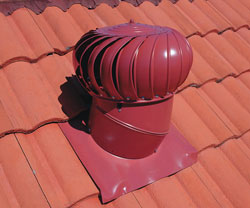Loft Ventilation Information
If you live in a loft or are thinking about purchasing one, it's important that you learn more about the topic of loft ventilation. Understanding why this type of ventilation matters will ensure that you are able to enjoy living in a loft without having to deal with the problems that come along with poor ventilation.
How Important is Loft Ventilation?
Loft ventilation is very important. The primary reason this is a subject you need to care about is because poor ventilation means very little air is moving around in a loft. If air isn't moving, conditions are ideal for condensation to begin forming. As more condensation builds up, it can accumulate on timbers and around the walls of a loft. When this occurs, it can lead to the timbers rotting, as well as mold growth. These types of problems can make a loft very unsafe. If timbers aren't in good shape, it can jeopardize the entire structure. And if mold begins growing, it can make it difficult to breathe.
Is Mold Growth as Bad as People Say?
Yes, mold growth is not something that you want to have to experience for yourself. One of the reasons mold can create such serious problems is because it can grow on almost any surface. As long as moisture from condensation is present, mold can begin growing in as little as three days. And once it starts growing, it can quickly spread to other surfaces. Since mold can grow in hidden places such as behind walls or in deep crevices, many people are shocked when they discover the extent of their mold problem.
Another issue with mold is once it begins growing, it can be hard to get rid of it for good. Although professional restoration companies can get rid of it, if the conditions that caused the growth in the first place aren't addressed, there's a good chance that the growth will resume.
Can Loft Ventilation Be Improved?
Absolutely. While no one wants to deal with problems like rotting timbers and mold growth, the good news is proper loft ventilation can help avoid them. In fact, there are several ways to improve ventilation in a loft, including:
- Soffit vents
- Tile vents
- Ridge vents
- Ventilation bricks

Categories
- Home
- Loft Ventilation Information
- DIY Loft Ventilation
- Loft Insulation and Ventilation
- Loft Ventilating Roof Space
- Loft Ventilation and Condensation
- Loft Ventilation Building Regulations
- Loft Ventilation Costs
- Loft Ventilation Ideas
- Loft Ventilation Installation
- Loft Ventilation Plans
- Loft Ventilation Problems
- Loft Ventilation Tips
- Loft Ventilation Companies
- Loft Ventilation Products
- Types Of Loft Ventilation
